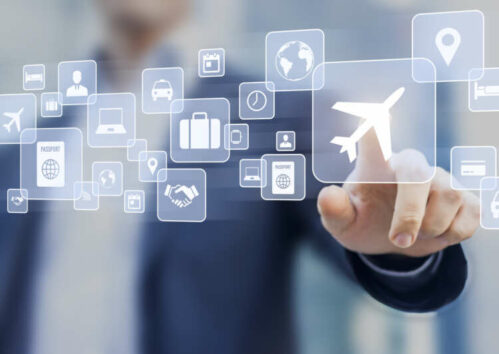

Despite the current economic environment, our desire to travel hasn’t dimmed. Amadeus’ June Consumer travel spend priorities report, which surveyed 4,500 consumers in the US, UK, Germany, France and Singapore, revealed that two out of five (42%) rated international travel a high priority for the coming year. When compared with the other responses, travel ranked well. Approximately 32% of respondents said they would prioritise domestic holidays, 28% cited online entertainment, 27% valued eating out and 20% said buying a new car or home was a priority. As a global travel technology provider with close relationships with customers across areas, including hospitality, business travel and aviation, we know that many businesses are hedging their bets on this recovery.
Many travel firms are investing now to offer the best customer experience to returning travellers. One area where there is significant investment is in payments and fintech. A prime example is the introduction of advanced airline retailing capabilities under the International Air Transport Association’s (IATA) New Distribution Capability, which removes payment friction to enhance merchandising. Once again, Amadeus research confirms that most industry players share our view. According to our Travel fintech trends research of 70 senior industry leaders, more than 50% of respondents plan to surpass 2019 payments and fintech investment, with 30% likely to match it. So, what are these capabilities and why are they looking to offer them?
Travel’s Payments Challenges
Many travel businesses are grappling with chargebacks – the formal process initiated when a cardholder disputes a transaction, often leading to them being reimbursed funds directly by their issuing bank. Recent high levels of disruption and strained industry refund processes have led to significantly more chargebacks since 2020. According to the Travel Fintech Trends research, 70% of travel businesses saw an increase in chargebacks, increasing by 50% during the pandemic in 2021 when compared to 2019 averages, and by more than 100% for a significant minority of travel companies (20%). This led to one in three firms increasing headcount to manually process chargebacks during the pandemic, a time when operational roles were often reduced. Almost a quarter of respondents admitted that their companies can’t handle the increased burden and are currently unable to respond to or challenge chargebacks.
According to chargeback management firm, Chargebacks 911, around two-thirds of all chargebacks are categorised as ‘friendly fraud’ for which merchants should not be held liable. This occurs when a customer makes a purchase with a credit or debit card and then disputes the charge with their bank even if they don’t have a legitimate reason to do so. There have also been reports of travelers submitting chargebacks in situations where they haven’t received the signature cocktail during a flight or when a trip was ‘unreasonably turbulent’.
One way the industry is working to rethink chargebacks is through automation powered by improved information visibility. Often the key to resolving a dispute is transparent access to information. By making certain information more visible via application programming interfaces (APIs), for example, booking and payment information, there is an opportunity to automate and improve this important back-office function.
Where the Opportunities Lie
Buy Now Pay Later (BNPL) – where travel is paid for in a series of installments based on a rapid credit assessment – is becoming increasingly common in travel. Of course, BNPL is already a widely accepted payment solution in other sectors, with data showing that by 2024 around 10% of all e-Commerce sales in the US will be made using BNPL, up 300% since 2018. This payment solution is particularly well suited to travel, which has a high average purchase cost representing a significant up-front investment on the part of the traveller.
However, travel companies aren’t banks, and assessing credit risk is complicated. Specialist providers have gained traction by offering plug-and-play BNPL capabilities for the sector. These providers assess the traveller’s credit score and the ability to pay the instalments. They may also offer models where they assume the consumer default risk, including providing the fare to the merchant at the time of booking.
There are several scenarios where travellers choose to use BNPL, including upgrading to business class experiences and spreading the costs across 12 monthly instalments for a one-off fee at the time of booking. Meanwhile, many travellers who can afford the initial up-front cost still choose to spread the payments to preserve their free cash flow. For travel businesses, BNPL helps improve the customers’ booking and payment experience while increasing conversion and boosting ancillary revenue opportunities. According to Amadeus’ Pay When You Fly research, 49% of 5,000 travellers surveyed said they would be more likely to book an airline ancillary service, while 68% said they would spend more overall on their trip if BNPL was offered.
Meanwhile, almost a third of travel companies this year see the pricing of services in multiple currencies as a priority. If travellers book a flight or holiday using a third-party website non-native website, they are likely presented with the price in a foreign currency which is unfamiliar to them. Often this may lead to basket abandonment and might direct potential buyers to a third-party website where they will manually convert the price.
A growing number of travel companies are interested in simplifying this experience by presenting services in a currency the traveller understands. Enabling them to select their preferred currency to settle the payment on an airline’s website helps the company assume greater control over the foreign exchange transactions to which its customers are exposed. Rather than a financial intermediary completing an FX transaction and adding conversion spread, travel companies can work with an FX provider so travellers can play in their native currency with greater transparency. It also avoids the need for travellers to navigate away from the booking stream to a third-party website to manually convert the price.
The Future of Fintech
Fintech will become more intertwined in travel and tourism as travel companies begin to offer regulated financial products that play to loyalty advantages they have established over the years. For example, the online travel agency Hopper has been performing strongly thanks to its array of fintech products. One such tool enables customers to pay a fee to leave a hotel after check-in for any reason.
Additional fintech services include disruption protection in the event of delayed flights and cancellations and another that lets customers pay to freeze the price of a hotel room before it rises.
End-to-end invisible payment experiences will become more prevalent too. Imagine a traveller arriving at the airport and identifying themselves by using biometrics at the kiosk. Then they decide to buy fast-track security and lounge access quickly and simply by presenting their face at a scanner. This method could also be used in place of a boarding pass and passport, or when a traveller picks up a rental car or checks into a hotel. With identity stored on a traveller’s phone, travel companies can reduce compliance risk as they no longer need to store as much sensitive passenger data.
Payments are essential to the overall travel experience. To meet the new expectations of today’s traveller, the industry needs greater innovation and investment. The expansion of fintech in travel presents a wide range of possibilities for travel companies looking to improve their digital experience, boost customer loyalty and, most importantly, ensure a smooth traveller experience across all touchpoints.
Travel will always remain an escape from the stresses of everyday life, we should ensure it is enjoyable and as smooth as possible.
CLICK HERE to read the original article, published by Global Banking & Finance Review







